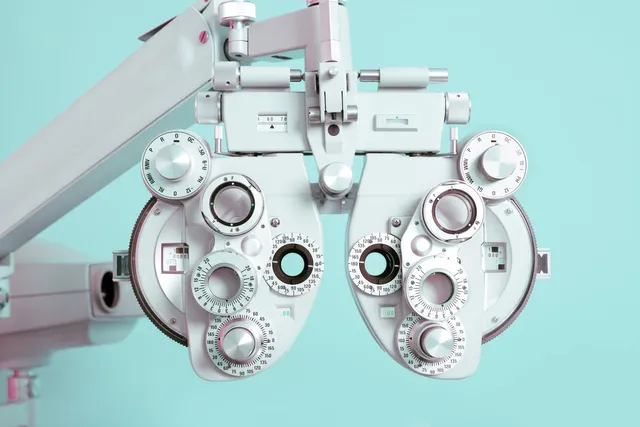June marks Cataract Awareness Month, a time dedicated to educating people about one of the most common eye conditions affecting older adults.
If you’ve noticed that reading has become more challenging lately or that driving at night feels more difficult than it used to, you’re not alone. These changes might seem like a natural part of aging—and in many ways, they are—but understanding what’s happening to your vision can help you take control of your eye health.
Cataracts affect more than 24 million Americans over the age of 40, making cataract awareness crucial for maintaining a quality of life as we age. The good news? Cataracts are highly treatable, and with today’s innovative surgical techniques, millions of people regain clear vision every year.
What Are Cataracts?
Think of your eye’s natural lens like the lens of a camera—it needs to be crystal clear to focus light correctly onto the retina at the back of your eye. A cataract occurs when this usually transparent lens becomes cloudy or opaque, much like looking through a foggy window or a piece of wax paper.
Your eye’s lens is made primarily of water and protein. Over time, these proteins can clump together, creating cloudy areas that block or scatter light as it passes through. This cloudiness is what we call a cataract, and it’s what causes the vision changes you might be experiencing.
Cataracts don’t form overnight. They develop gradually, often so slowly that you might not notice the changes at first. Many people describe it as feeling like they need new glasses, only to find that even updated prescriptions don’t fully restore their crisp vision.
How Cataracts Develop
Cataract development is primarily a natural consequence of aging. Just as our hair turns gray and our skin develops wrinkles, the proteins in our eye’s lens change over time. Most cataracts are age-related, typically beginning to form in people over 60, though they can start developing earlier.
The process usually follows this timeline:
- Ages 40-50: Protein changes begin, but vision remains largely unaffected
- Ages 60-70: Clouding becomes more noticeable, vision changes become apparent
- Ages 70+: Cataracts often become significant enough to impact daily activities
However, the progression varies significantly from person to person. Some individuals develop cataracts earlier due to various risk factors, while others maintain relatively straightforward lenses well into their 80s.
Symptoms to Watch For
Recognizing cataract symptoms early can help you seek appropriate care before your vision significantly impacts your daily life. Here are the most common signs:
Early Symptoms:
- Slightly blurred or hazy vision
- Increased sensitivity to bright lights
- Seeing halos around lights, especially at night
- Colors appearing less vibrant or slightly yellowed
- Needing brighter light for reading
Advanced Symptoms:
- Significant vision cloudiness affecting daily activities
- Double vision in one eye
- Frequent changes in eyeglass prescription
- Difficulty driving, especially at night
- Trouble recognizing faces from a distance
Sarah, a 68-year-old retired teacher, noticed she was having trouble reading the newspaper even with her reading glasses. “I thought I just needed a stronger prescription,” she recalls. “But when I went for my eye exam, my optometrist explained that cataracts were causing the problem. Understanding what was happening helped me feel much more confident about my treatment options.”
Risk Factors: Who’s Most Likely to Develop Cataracts?
While aging is the primary risk factor for cataracts, several other factors can increase your likelihood of developing them or accelerate their progression:
Age-Related Factors:
- Over 60: Risk increases significantly with each decade
- Family history: Genetics play a role in cataract development
- Previous eye injury or surgery: Can accelerate cataract formation
Health Conditions:
- Diabetes: High blood sugar levels can cause lens proteins to break down faster
- High blood pressure: May affect blood flow to the eyes
- Obesity: Often linked with other risk factors like diabetes
Lifestyle Factors:
- Smoking: Significantly increases cataract risk
- Excessive alcohol consumption: Can contribute to nutritional deficiencies affecting eye health
- Prolonged UV exposure: Years of unprotected sun exposure damage lens proteins
Medications:
- Long-term steroid use: Both oral and topical steroids can increase risk
- Certain medications: Some drugs used for other conditions may contribute to cataract formation
The encouraging news is that some risk factors are within your control. Protecting your eyes from UV rays, maintaining a healthy diet rich in antioxidants, managing diabetes effectively, and avoiding smoking can all help slow the progression of cataracts.
Treatment Options: From Management to Surgery
Non-Surgical Management
In the early stages, cataracts can often be managed without surgery:
- Updated eyeglass prescriptions: Can help compensate for mild vision changes
- Anti-glare coatings: Reduce problems with light sensitivity
- Magnifying lenses: Helpful for reading and close work
- Improved lighting: Brighter, more focused light can enhance vision
When Surgery Becomes Necessary
Cataract surgery becomes the recommended option when cataracts significantly interfere with your daily activities and quality of life. This might include:
- Difficulty reading, driving, or watching television
- Problems with work or hobbies
- Increased risk of falls due to poor vision
- Inability to pass vision tests for driving
Modern Cataract Surgery
Today’s cataract surgery is remarkably safe and effective, with a success rate exceeding 95%. The procedure typically involves:
- Outpatient surgery: Usually takes 15-30 minutes
- Local anesthesia: You remain awake but comfortable
- Ultrasonic removal: The cloudy lens is broken up and removed
- Lens implantation: A clear, artificial lens replaces your natural lens
- Quick recovery: Most people return to normal activities within a few days
Many patients are amazed by the improvement in their vision. Colors appear more vibrant, night driving becomes easier, and the need for glasses may be reduced or eliminated, depending on the type of lens implant chosen.
Addressing Common Concerns
“I’m worried about surgery on my eyes.” Modern cataract surgery is one of the most successful procedures in all of medicine. Serious complications are rare, occurring in less than 1% of cases.
“Will I need surgery on both eyes?” Cataracts often develop in both eyes, but usually at different rates. Surgery is typically performed on one eye at a time, with a period of several weeks between procedures.
“Am I too old for surgery?” Age alone is rarely a barrier to cataract surgery. Many people in their 80s and 90s successfully undergo the procedure and experience dramatic vision improvement.
Taking Action: Your Next Steps
During Cataract Awareness Month and throughout the year, the most important step you can take is scheduling regular comprehensive eye exams. Early detection allows for better monitoring and planning, ensuring you receive treatment at the optimal time.
If you’re experiencing any vision changes, don’t assume they’re just a regular part of aging. Many cataract symptoms can be addressed effectively, and waiting too long may make daily activities unnecessarily challenging.
Schedule your comprehensive eye exam today. During your visit, your eye care professional can:
- Assess your current vision and eye health
- Detect cataracts in their early stages
- Discuss treatment options tailored to your lifestyle
- Address any concerns about cataract surgery
- Help you plan for optimal timing if surgery becomes necessary
Remember, cataracts are incredibly common—you’re certainly not alone in this experience. With today’s advanced treatment options, clear vision can often be restored, allowing you to continue enjoying all the activities that matter most to you.
Don’t let cataracts cloud your view of the world. Take advantage of Cataract Awareness Month to prioritize your eye health and take the first step toward clearer vision and a brighter future.



